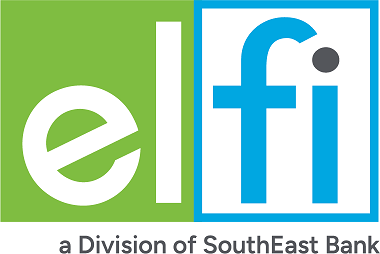Understanding interest rates is key when private and federal loans. Federal loans come with fixed interest rates that are reviewed annually, ensuring your rate remains constant throughout the loan’s life. Private loans, however, offer more flexibility with both fixed and variable rate options. Your rate largely depends on your credit history, meaning your financial background plays a significant role in shaping your loan terms.
Be sure to do your research and choose wisely to ensure your student loan strategy aligns with your financial goals and capabilities.
Current Student Loan Interest Rates
| Loan Type | Interest Rate |
|---|---|
| Private Student Loans | Starting at 5.09% to 14.50% |
| Federal Direct Stafford Student Loans for undergraduate students | 6.39% for loans first disbursed between July 1, 2025 through June 30, 2026 |
| Federal Direct Stafford Student Loans for graduate or professional students | 7.94% for loans first disbursed between July 1, 2025 through June 30, 2026 |
| Direct PLUS Loan | 8.94% for loans first disbursed between July 1, 2025 through June 30, 2026 |
Average Private Student Loans Interest Rate 2025
For the period of 2022 through 2023, we estimate the average private student loan interest rate to be 7.12%. This estimate is based on the past two years of publicly available data (primarily weighted average borrower interest rates published in investor reports*).
Current variable private loan APR rates are as low as 5.09%. Rates may be very different from one lender to the next, and usually variable rates have a lower starting point than fixed rates. A creditworthy cosigner may help you qualify for a lower rate.
*Investor reports reviewed include, Sallie Mae, Wells Fargo, Citizens, PNC, SunTrust/Truist, Nelnet, Sofi, and College Ave
Average Federal Student Loan Interest Rate
Interest rates on federal student loans are fixed and based on degree level and the type of Direct Loan you borrow. Fortunately, in recent years, rates have dropped annually. See the chart below for current rates in effect for the 2022-2023 academic year. You can also check out our companion article on student loan interest rates dating back to the 2014-15 academic year.
Federal Student Loan Interest Rates for the Past 5 Years:
| Academic Year | Direct Loans (Undergraduate) | Direct Loans (Graduate) | Direct PLUS Loans (Parents and Graduate/Professional Students) |
|---|---|---|---|
| 2023-24 | 5.50% | 7.05% | 8.05% |
| 2022-23 | 4.99% | 6.54% | 7.54% |
| 2021-22 | 3.73% | 5.28% | 6.28% |
| 2020-21 | 2.75% | 4.30% | 5.30% |
| 2019-20 | 4.53% | 6.08% | 7.08% |
Student Loan Refinance Interest Rates: An Option to Lower Your Interest Rate
If you feel you’re interest rate is too high and you would like to lower it, you may achieve that through refinancing your student loans. Refinancing is the only way to lower your interest rate. Refinancing allows you to include one or more private and/or federal student loans into one new loan. Your new interest rate will be determined by current market rates and the creditworthiness of you or your cosigner. The stronger your credit history, the lower the interest rate you will be eligible for. Most young borrowers qualify for lower rates when they apply with a creditworthy cosigner.
This differs from how interest works when you consolidate your federal student loans with the Direct Consolidation Loan Program. The federal consolidation loan program is for federal student loans only. When you consolidate your student loans your new interest rate will be the weighted average interest rate for all of the loans you included in your consolidation.
Compare Student Loan Rates
If you’re borrowing loans to pay for college, it is always a good idea to compare current interest rates in the federal student loan program against private student loans. This is particularly true when it comes to the PLUS Loan program. Whether you are a graduate/professional student, or a parent looking to borrow on behalf of your son or daughter, interest rates for a Direct PLUS Loan are typically higher than other loan types. And they come with an origination fee.
In comparison, private student loans can be highly competitive with lower rates and zero origination fees. Since both loans do require a credit check, if you are eligible for a loan with a lower rate and better terms, it may be worth taking the time to shop around.
How Student Loan Interest Rates Work
When it comes to federal student loans, the current interest rate is set by Congress and is based on the final 10-year Treasury notes auction held in May, with an added percentage.
When it comes to private student loans, historically most lenders have used the one-month or 3-month LIBOR (London Inter-Bank Offered Rate) as the basis for the interest rates they offer. Some lenders may use the Prime Rate, and you may also start to see the Secured Overnight Financing Rate (SOFR) used. Whichever index your interest rate is tied to, the lender will add a markup on top of it. The amount of the markup will be based on your credit and other factors. Ultimately, this will determine your Annual Percentage Rate (APR).
To get an idea of how student loan interest adds up on your student loans, we’ve got you covered. We go more in depth here.
Historical Student Loan Interest Rates
For a deeper history on student loan interest rates, we recommend checking out this great resource from the Federal Student Aid website. They track rates as far back as 2006. Understanding historical interest rates may be helpful if you have prior outstanding loans that you’ve lost track of, and you need to understand whether refinancing could save you some money today.
Student Loan Calculator
By using a student loan calculator (such as the one on this website), can give you an estimate of your monthly payment. Simply input the type of loan you have, the estimated loan balance, and your interest rate and loan term if you know them (estimate if you need to). And you’ll notice that we included helpful tips on the right-hand side, along with advanced options at the bottom to add more details or loans.
What to Read Next
Best Private Student Loans for June 2025





















